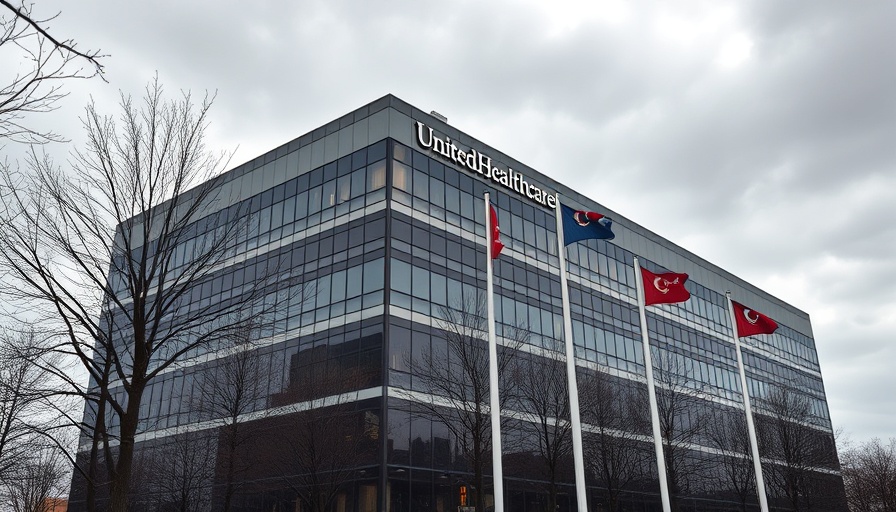
The Rise of UnitedHealthcare: A Case Study in Health Insurance Frustration
UnitedHealthcare has solidified its position not just as the largest private health insurer in the U.S. but also as a symbol of the widespread frustrations with America’s health-care system. With reports from patients and health policy experts painting a grim picture, the challenges associated with obtaining affordable and efficient health care through such large entities have sparked a national dialogue.
Experience of the Everyday Patient
Many Americans are sharing stories of dread when dealing with complicated billing practices and customer service hurdles. For instance, Sue Cover, a benefits advocate from San Diego, recounted her six-month battle to resolve an overbilling issue with UnitedHealthcare that left her feeling drained. "It sometimes took my entire day of just sitting on the phone, being on hold with the hospital or the insurance company," Cover explained, a sentiment echoed by many.
This narrative underlines a pervasive issue: how intricate policies and lengthy claim processes seem deliberately designed to wear down patients, forcing them into submission and leading to heightened anger towards insurers like UnitedHealthcare, who are supposed to ease their burdens, not exacerbate them.
The Industry’s Response to Criticism
Despite the flak, the insurance sector is not remaining silent. Various startups are emerging that aim to contest this long-engrained status quo. They've recognized a significant market opportunity in resolving some of the frustrations faced by consumers. Innovations range from user-friendly apps that simplify claims processing to platforms that provide transparent pricing for procedures, representing a counter-narrative to the established insurance giants.
Experts opine that this sector shift is crucial to improving the relationship between insurers and policyholders. It begs the question: can these new entrants change the fabric of the industry, or are we still bound to what has historically been a frustrating experience for patients?
Policy Implications and Future Predictions
Looking down the road, many critics call for more robust healthcare reforms. They argue that without systemic changes, frustrations with companies like UnitedHealthcare are likely to persist, undermining public confidence and satisfaction in the healthcare system as a whole.
Health policies that encourage competition among insurers, improve transparency in billing, and enforce more stringent regulations against unfair practices may be key. As the political landscape shifts, could we see lawmakers pushing for a re-evaluation of how health insurance operates in the U.S.? It’s a possibility that could radically change patient experiences.
Relevance to Current Events and Recent Backlash
The outcry against UnitedHealthcare comes amid a broader landscape of health care criticism in the U.S. As cost-saving measures and profit margins have driven policy decisions in many major insurance companies, the response from the public has not been favorable. Community voices are rising, with calls for accountability and reform growing louder.
This backlash is not only reflective of personal experiences but also situates itself firmly within the larger context of ongoing discussions about healthcare accessibility and equity in America. The recent trend in public sentiment towards health insurance providers is indicative of a possible turning point where consumers demand more from their insurers.
Emotional and Human Interest Perspectives
At its core, the conversation around UnitedHealthcare's reputation is deeply human. Each story of frustration and financial strain represents not just numeric data but the lives of individuals and families caught in what feels like an unending loop of bureaucracy.
Consider those stories during the holiday season when the burdens of unresolved bills weigh heavily and threaten to dampen spirits. Months spent negotiating healthcare costs can feel like a relentless tug-of-war, wearing down even the most resilient individuals.
Conclusion: A Call for Change
As we explore these challenges, it becomes clear that the need for change is urgent. Patients deserve a streamlined process that alleviates their anxieties, not adds to them. Innovation from new startups provides a glimmer of hope, but systemic reform will be essential for lasting change.
Whether through advocacy or innovation, every voice contributes to shaping the future of healthcare. It's imperative for not just patients but all stakeholders in the healthcare system to keep advocating for transparency, efficiency, and the humane treatment they rightfully deserve.
 Add Row
Add Row  Add
Add 




Write A Comment